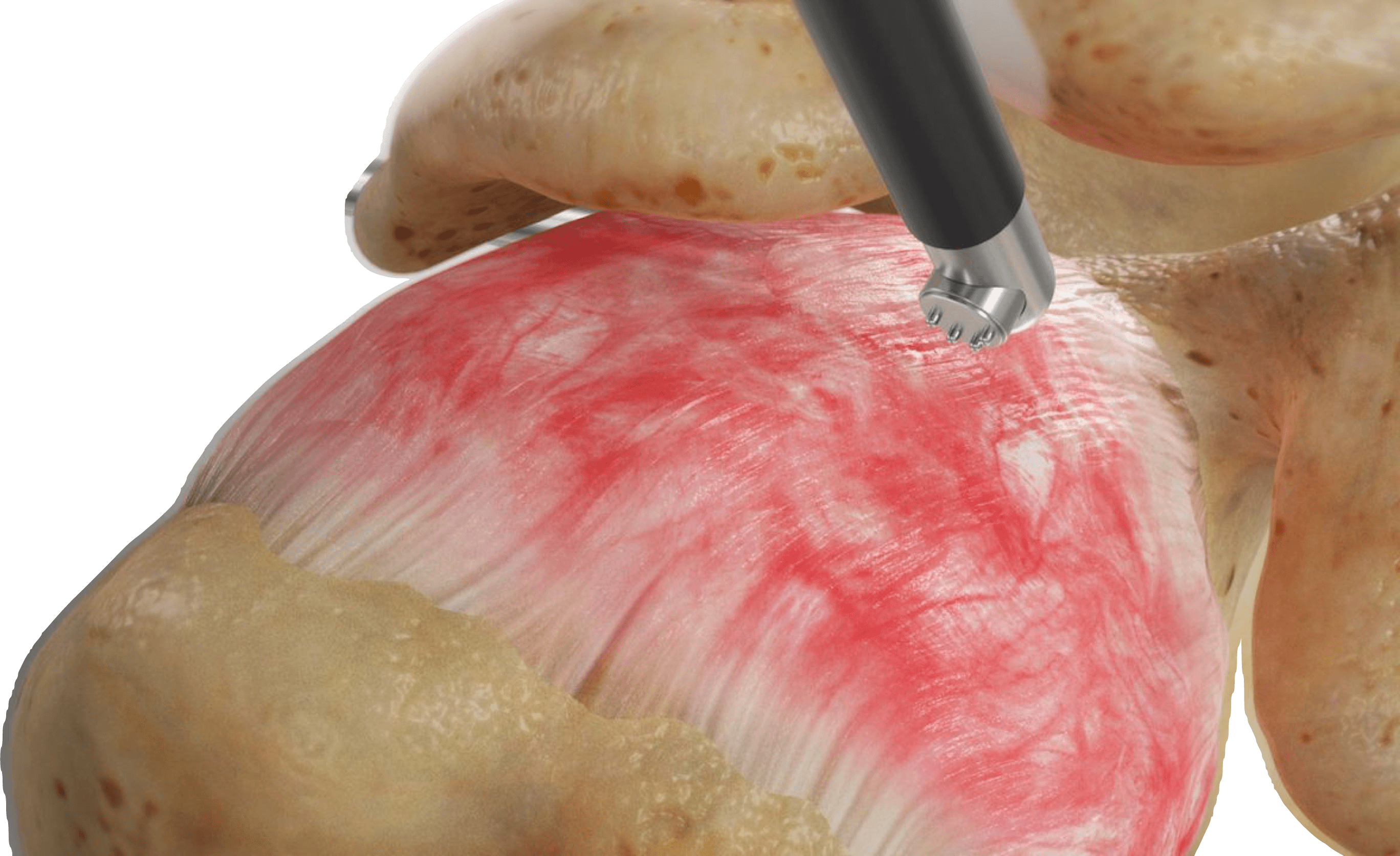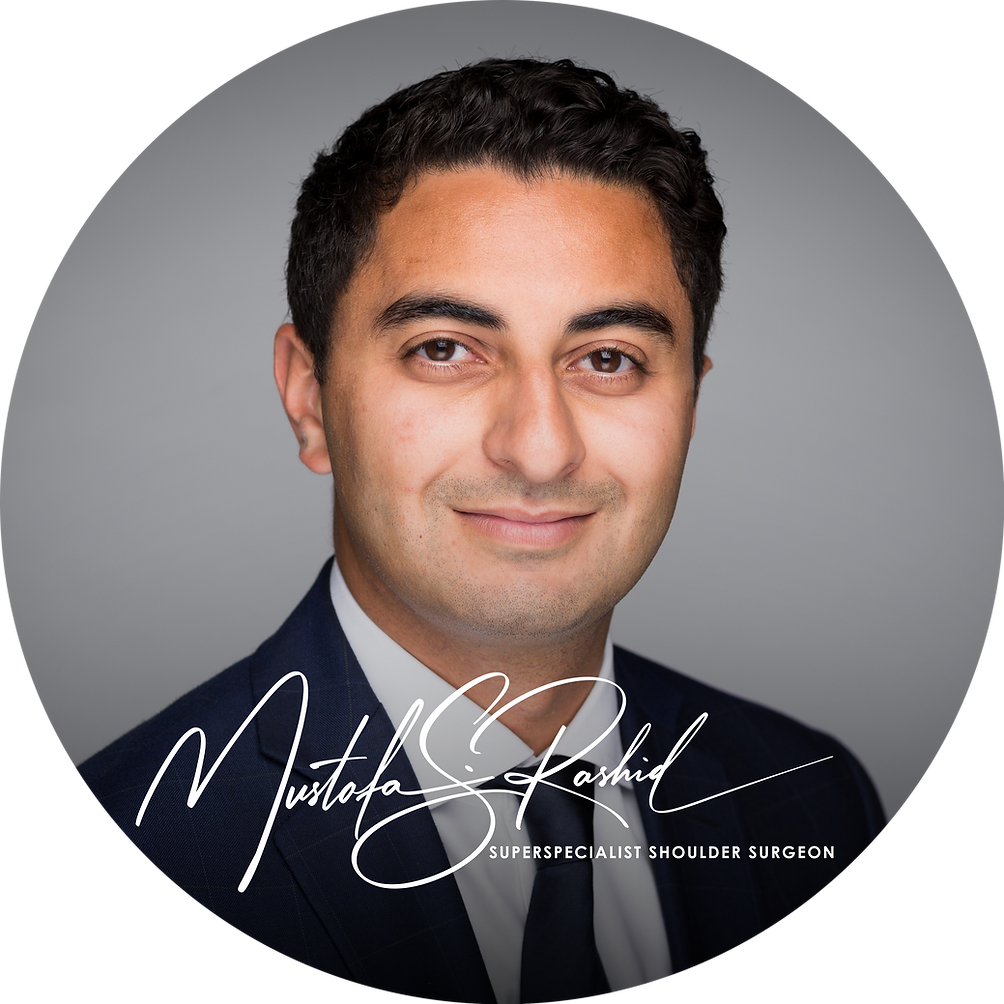Frozen Shoulder Release Surgery

Overview
Most people with frozen shoulder will not require surgery to release their shoulder. Patients that choose to have this surgery often have failed to improve with time and other less invasive treatments. This type of surgery is very safe and successful at gaining immediate improvements in pain and stiffness. It is performed by Dr. Rashid using a arthroscopic (keyhole) technique to release the tight, and scarred lining of the shoulder (red dotted line on the diagram).
Indications for Surgery
The typical indications for this type of surgery are patients with frozen shoulder (thickened and inflamed lining of the shoulder joint) that causes pain and limitation of movement. Patients have often failed less invasive treatments and wish to return to full function quickly.
Pre-Surgery Tests and Assessment
Before any capsular release surgery, a variety of assessments and tests, such as X-rays, and occasionally a MRI scan are performed. Dr. Rashid will assess your shoulder tightness carefully to determine what your restrictions are, and how best to release your shoulder tightness.
Procedure Details
Under general anaesthesia, you will be positioned onto your side and your arm will be placed in a special arm holder. The restricted motion of your shoulder will be confirmed when you are under anaesthetic and documented. After sterilising the skin with a cleaning solution, a keyhole camera is inserted into your shoulder. The inflamed areas and scar tissue are inspected. Then, using a radiofrequency device the scarred and inflamed lining of the shoulder joint is cut under direct visualisation to release the shoulder. After completely releasing the tightness within the shoulder, Dr. Rashid will then reassess your motion whilst under general anaesthetic, to confirm the restrictions have been removed completely. The skin incisions are closed with stitches that are absorbable and buried under the skin. Dressings and a sling are then applied. This type of surgery typically takes less than one hour.
Risks and Complications
The risks of frozen shoulder surgery are not common. These include infection, recurrence of stiffness, causing a fracture in the bones, and nerve injury (very rare). Dr. Rashid has carefully trained over many years to perform this operation and can do so safely and effectively. Dr. Rashid also uses a cortisone steroid injection at the end of the surgery to reduce the inflammation response from the operation, helping manage pain and recurrence of stiffness.
Recovery and Rehabilitation
Recovery following this type of surgery involves discarding your sling immediately (usually in the first few days), and commencing early movement and stretching exercises to maintain the new range of motion. Physiotherapy is helpful to ensure you maintain your motion. Most people will regress slightly but then make great strides to return to normal movement and function of their shoulder. Pain relief is often appreciated in the first month.
Expected Outcomes
Most people choose this surgery to gain quick results and return to normal activities sooner than if they wait for their frozen shoulder to resolve naturally. Most people are able to return to tennis, golf, swimming, weightlifting, and physical labour between 1 and 3 months after surgery. Dr. Rashid will follow your progress closely to ensure that your shoulder is rehabilitating well over time. Most people can return to work, including driving with 2 weeks. Most people will successfully return to full movement and function within a short amount of time (typically 3 months). This is mostly determined by how well you do your stretching and physical therapy exercises after surgery.
About the Author

Mustafa Rashid
Dr. Mustafa Rashid is an award-winning, well published superspecialised surgeon from the UK, specialising in shoulders
